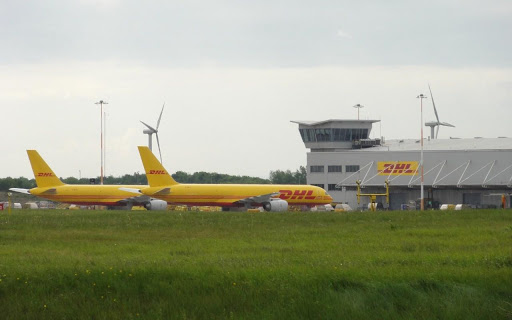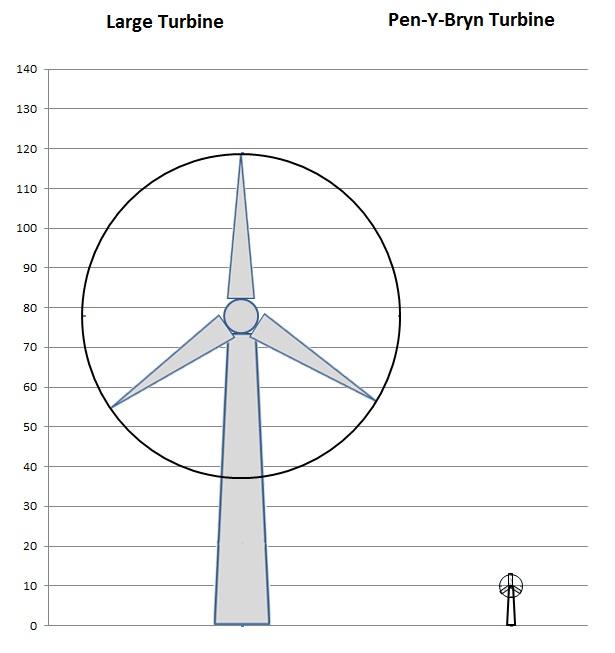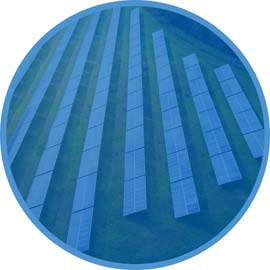Introduction
A small wind turbine was erected on private land adjacent to West Wales Airport where testing of military Unmanned Aerial Vehicles (UAVs) takes place. There is also a nearby military radar facility at Aberporth.
The owner of the wind turbine was of the view that planning permission had been granted for the wind turbine, whereas the local planning authority took the view that it had not.
The local planning authority issued an enforcement notice requiring that the wind turbine be dismantled because it did not have planning permission, and it would adversely affect operations at West Wales Airport.
Pager Power was appointed to advise the wind turbine on operator regarding UAV and radar interference issues at the subsequent Public Inquiry.
Background
There were four areas of potential concern regarding the wind turbine. These were:
- Effects on the Aberporth Primary Surveillance Radar (PSR)
- Effects on the Aberporth Secondary Surveillance Radar (SSR)
- Physical collision risk to aircraft using West Wales Airport
- Electromagnetic Interference between the wind turbine and UAVs using Aberporth
The wind farm’s owner appealed the enforcement notice issued by the local planning authority – resulting in a public inquiry held on 13 September 2011.
The Challenge
The appeal was quite unusual because the wind turbine was small and had already been built. The wind turbine was situated next to the runway at West Wales Airport, where UAVs are tested, and was also in range of the Ministry of Defence (MOD) radar at their Aberporth test facility run by QinetiQ.
Whilst there was plenty of evidence relating to the effects of wind turbines on radar and airports, generally there was little evidence relating specifically to the effects of wind turbines on UAV operations.
The Result
The appeal against the enforcement notice was allowed. Excerpts from the decision notice[1] are reproduced below:
- The appeal is allowed, the enforcement notice is quashed and planning permission is granted on the application deemed to have been made under section 177(5) of the 1990 Act as amended for the development already carried out, namely the erection of a wind turbine structure for the production of electricity on land forming part of Pen-y-Bryn, Blaenannerch, Cardigan SA43 2BN referred to in the notice.
….
- The inquiry opened on 13 September 2011. Following discussions between the parties during the day, the inquiry was adjourned at the end of that day until 29 September 2011, to enable a section 106 obligation to be drawn up in accordance with heads of terms agreed at the inquiry, together with a side agreement between the appellants and West Wales Airport (WWA).
- The period for completion of the section 106 obligation and side agreement was subsequently extended and certified copies of an executed obligation by way of unilateral undertaking and an associated deed of grant of easement by agreement, both dated 21 November 2011, were eventually submitted on 5 December 2011. The unilateral undertaking relates to the provision of a control mechanism enabling the wind turbine to be switched off and restarted in accordance with terms set out in the deed of grant of easement. The deed of easement enables WWA to install, maintain and operate the control mechanism so that it can ensure that the turbine does not operate at times when this would be inimical to WWA’s aviation operations. The section 106 unilateral undertaking is a material consideration to which I have had regard in reaching my decision.
….
- The parties agree that the turbine’s height and position does not infringe the obstacle clearance surface relating to WWA. The Council confirmed at the Inquiry opening that the sole basis of its concern in relation to the turbine related to the possible effects of its operation on radar/radio communications systems at WWA and radar systems forming part of the Ministry of Defence (MoD) facility at Aberporth.
….
- The other aspect of the air safety issue relates to operations at the nearby Aberporth range, operated by Qinetiq under a long term partnering agreement with MoD. The MoD Aberporth facility includes a primary surveillance radar (PSR) installation located 2.7km from the turbine and a secondary surveillance radar (SSR) installation located 1.4km away. The Defence Infrastructure Organisation submitted a letter of objection on behalf of MoD dated 3 August 2011. The basis of the objection was stated as being that “the turbine is 1.39km from, in line of sight of, and will cause unacceptable interference to the range control radar at Aberporth”. The letter of objection went on to identify the potential detrimental effects of wind turbines on radar performance as including the desensitisation of radar in the vicinity of the turbines and the creation of false aircraft returns.
- These matters are dealt with in the evidence on behalf of the appellants provided by Mr Watson (Pager Power aviation studies). Mr Watson’s evidence was the only expert evidence provided on this matter, and is not challenged by the Council. Mr Watson’s evidence points out that the MoD objection letter is unclear because the stated distance clearly relates to the SSR, whereas the description of the anticipated effects relates to PSR. In the absence of meaningful clarification from MoD’s technical advisors as to whether the concerns related solely to the turbine’s effect on the Aberporth SSR referred to in the letter or to effects on the Aberporth PSR as well, and as to the detailed nature of any concern in relation to the PSR and SSR, Mr Watson has assessed the turbine’s potential effects in relation to both the PSR and SSR installations.
- In relation to the PSR, the turbine is well below line of sight, due to the intervening high ground. The indicative radar detectability calculation undertaken, based on an advanced methodology published in the first edition of Civil Aviation Publication 764, shows that the energy reflected back to the radar from the turbine will be a hundred times smaller than the minimum level the radar is able to detect, due to terrain shielding. As such, the turbine is highly unlikely to affect the PSR.
- In relation to the SSR and the issues raised on behalf of MoD, the thrust of Mr Watson’s expert evidence is that wind turbines do not cause desensitisation on SSR; they can only produce false targets via reflections of genuine targets; fundamentally the effects of wind turbines on SSR performance would not be expected to differ from those of static structures; there are many larger static structures than the turbine in the vicinity of the SSR including hangars, airport and commercial buildings and masts; neither the MoD nor Qinetiq has reported any effects of the existing wind turbine on the SSR; Mr Watson knows of no instance of such a small turbine ever having affected an SSR radar in any way whatsoever. The conclusion of Mr Watson’s evidence is that it is highly unlikely that the wind turbine will ever have a significant effect on the SSR.
- Shortly before the inquiry opened the Defence Infrastucture Organisation confirmed that, after consideration of further reports from its technical experts, the MoD had elected not to be represented at the Inquiry.
- I find no reason to doubt the expert evidence submitted in relation to this matter, which points unequivocally to the turbine having no materially adverse effect on the operation of the radar installations at MoD Aberporth.
- On the evidence before me I conclude that the potential for the turbine to have any detrimental effect on the operation of the radar installations at MoD Aberporth is negligible. Coupled with my conclusion that the existence of the section 106 obligation and associated side agreement addresses the operational issues raised in relation to WWA, I conclude overall on the main issue that the wind turbine has no material adverse implications for the nearby aviation operations at WWA and MoD Aberporth. As such, the development does not conflict with the provisions of UDP policy ENVP3.4, or with government policy guidance concerning wind turbines and aviation issues.
To download the full report, click here
[1] Appeal Ref: APP/D6820/C/11/2149763

Wind Turbines at East Midlands Airport, UK

The relative size of the Pen-Y-Bryn turbine compared with a typical large turbine
How can we help you today?



THE SECTORS WE SERVE




